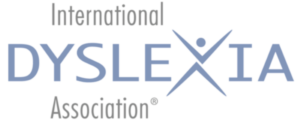Structured Literacy: Teaching Our Children to Read
Written by Hal Malchow
Published on August 11, 2014
This is a Guest Post by Hal Malchow, President of the International Dyslexia Association
Across America, parents of children with learning differences struggle to get “appropriate education” in their public schools. The law provides children with dyslexia the right to an IEP. But few schools have teachers qualified to teach reading in the right way.
The problem with reading instruction is not limited to children with dyslexia and other learning disorders. There is a mountain of research showing that the approach to reading that was developed to help children with dyslexia learn to read works best for all children as well. And because our schools are teaching reading in the wrong way, only 34% of third-graders are reading at a proficient level, and reading scores on the SAT have fallen to a 40-year low.
 The International Dyslexia Association is preparing a major campaign to change how reading is taught in America.
The International Dyslexia Association is preparing a major campaign to change how reading is taught in America.
We have published standards showing what research demonstrates to be best practices in reading instruction. We are accrediting universities that prepare their graduates to teach reading in the right way. Now we are building a certification exam that will provide qualified teachers with credentials recognizing their ability to bring best practices into the classroom.
But the biggest part of our campaign lies ahead of us. One problem is that our approach to reading instruction goes by many names. So IDA, after surveying professionals, teachers, and parents, has adopted “Structured Literacy” to describe the family of reading instruction that goes by many names (Orton-Gillingham, Multi-Sensory, Explicit Phonics, and others). We are working to build a coalition that includes not just organizations like Lexercise that serve people who learn differently but organizations working for evidence-based reading instruction that will benefit all beginning readers.
In 2015 we will begin a marketing campaign to show educators the benefits of Structured Literacy. By bringing Structured Literacy into American classrooms, we will not only provide “appropriate education” for children with dyslexia. We will help all students gain better reading skills and greater academic success.
Learn more about the importance of structured literacy here.
Improve Your Child’s Reading
Learn more about Lexercise today.
Schedule a FREE
15-minute consultation

